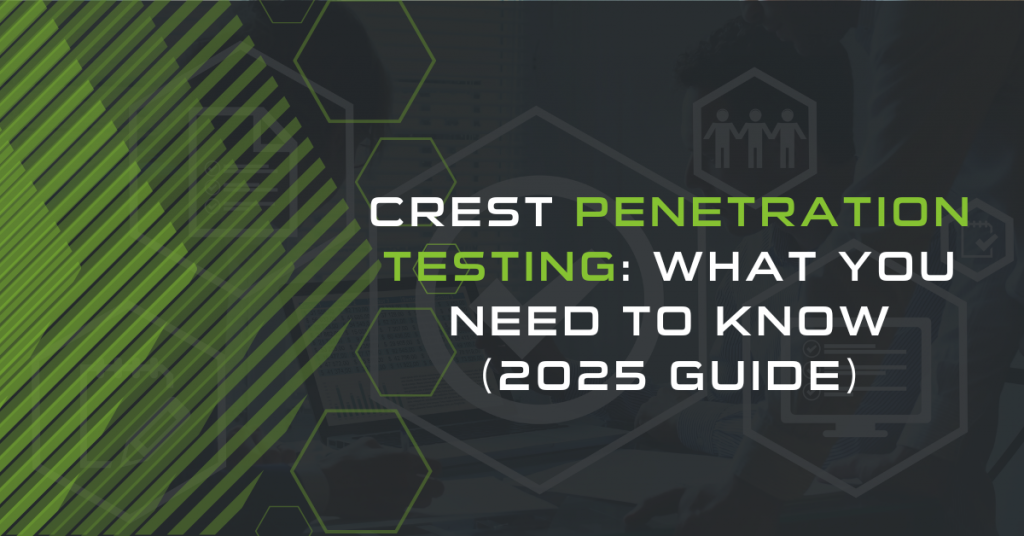What is Social Engineering Testing?
Social Engineering Testing employs many strategies to exploit human psychology and gain unauthorised access to sensitive information. The primary goal of Social Engineering Testing is to document how employees fall victim to social engineering attacks, providing valuable insights into areas for improvement.
These tests may involve attempting to gain unauthorised access to buildings by tailgating employees or using cloned access cards, sending emails that solicit sensitive information such as passwords or personal details, and directing employees to navigate to malicious websites designed to capture login credentials. The prevalence of social engineering is significant in the modern world, as highlighted by the Verizon Data Breach Investigations Report states that “74% of breaches involved the human element, which includes social engineering attacks, errors, or misuse.” This data highlights the critical importance of social engineering testing as part of a comprehensive security strategy to strengthen human defences against cyber threats.
Social Engineering Examples
Want to find out if your organisation is susceptible to these Social Engineering Attacks?

What does choosing a CREST provider mean?
Grey, Black and White Box Penetration Testing
What does Social Engineering Testing include?
Benefits of Social Engineering Testing
Social Engineering Testing offers numerous benefits by identifying and addressing vulnerabilities in human security protocols. By reducing the risk of successful social engineering attacks, our tests help build a culture of security awareness within organisations and validate both physical and technical security measures.
Social Engineering Testing Methodology
This initial phase involves gathering high-level information about the target organisation, its employees, and its infrastructure. Typically, the first phase of a social engineering engagement involves a Corporate OSINT assessment. The OSINT assessment includes understanding the company’s structure, identifying key personnel, and understanding the technological and physical environments.
Typical information that is collected includes:
- Understand the company’s structure.
- Document employee names, roles, and teams.
- Identify key personnel.
- Study technological and physical environments (Technologies used by the organisation and the physical buildings where employees reside).
- Collect specific information about systems and potential attack vectors.
- Gather physical security requirements of corporate buildings.
Specific targets within the organisation are identified based on the gathered information. These might be individuals or systems that are deemed to be particularly vulnerable to social engineering attacks.
A convincing pretext is developed and the social engineering attack is carefully planned. This involves creating a scenario that will be used to engage the target, such as impersonating a trusted entity.
Various tactics like phishing, impersonation, or pretexting are employed to deceive and manipulate targets. This could involve sending phishing emails, making vishing calls, or attempting to gain physical access to a facility.
Vulnerabilities exposed during the attack are exploited to gain unauthorised access or sensitive information. This might involve gaining access to secure areas, systems, or data.
Data is collected and documented throughout the engagement, including the methods used, information obtained, and any observations or insights gained during the test.
A detailed report is compiled that outlines findings, vulnerabilities, and recommendations. This report is then presented to the organisation to help them understand the vulnerabilities that were identified and how the organisation might mitigate the issues.
The organisation addresses identified vulnerabilities and implements necessary measures for improvement. This might involve enhancing security training (Such as Cyber Awareness Training), improving physical security measures, or implementing new technological controls.
Penetration Test Reports, Delivered.
Our comprehensive, professional reports clearly communicate risks, provide detailed remediation guidance, and demonstrate compliance with industry standards. Our deliverables are available through the Sencode Portal or accessible via a downloadable PDF.
Contact a consulting team member by phone, email, or pigeon post. We will then discuss whether we can help you and arrange a scoping meeting to discuss your requirements.
In the scoping meeting, our team will discuss your requirements in further detail. Our team will ask questions in regards to the following:
Our expert consultants will discuss and finalise which digital assets you need testing in the scoping meeting. Based on the requirements, we will then assemble a project proposal and quote and agree on a schedule for conducting the security assessment. Our proposal document will include the following information:
The Penetration Testing starts. A member of our Penetration Testing team will liaise with a member of your company throughout the entire testing process. You will be the first to know if we have any questions or concerns. Our testing team will be on hand throughout the penetration test lifecycle to answer any questions or concerns. Our tester will:
A Penetration Test is useless without a well-written report. Our reports are written in plain English, concise, and thoroughly documented. The Penetration Test Report is typically furnished within 5 days after the testing phase is complete. If you are interested in seeing an example report, please contact our team.
Each report details the following:
At Sencode, we offer free retesting for every Penetration Test we conduct. You fix the issues; then we will verify they can no longer be exploited by an attacker. Our team will arrange a mutually suitable time to conduct the retest, after the remediation efforts have taken place. Our tester will follow these steps:
Our clients receive a testing certificate that can be shared with partners and customers, showing that their company takes security seriously. The certificate and document are designed to be easily digested by third-party suppliers, the document removes the technical details and can be safely distributed.
The Security Testing Certificate is available on request, after the retest has been complete. The security certificate shows:
Get in touch for a consultation.
Contact a consulting team member by phone, email, or pigeon post. We will then discuss whether we can help you and arrange a scoping meeting to discuss your requirements.
In the scoping meeting, our team will discuss your requirements in further detail. Our team will ask questions in regards to the following:
Testimonials
Huler
Trinity College Dublin
Diversity and Ability
Verve Group
Pip Studios
Home Group









Frequently Asked Questions: Social Engineering Testing
The primary goal of Social Engineering Testing is to assess how well employees adhere to established security protocols and practices (If any are in place at the organisation), offering vital insights into potential security breaches.
This testing also aims to highlight the efficacy of security training that employees may have received. Alternatively, a tester might engage in vishing (voice phishing) by calling employees and masquerading as a trusted employee from another department. This multifaceted approach tests not only the digital security awareness of employees but also their preparedness against telephonic or in-person social engineering attempts, ensuring a thorough examination of potential human-centric vulnerabilities in the organisation’s cybersecurity framework.
Social engineering penetration testing has become crucial part of any organisations security testing regimen, especially with the rise of criminal activities that exploit human vulnerabilities continuing to rise. Social engineering has become a dominant strategy among criminals, effectively bypassing technical controls that may be in place and exploiting human errors.
With social engineering consistently cited as a top attack vector, the focus on human factors in cybersecurity is notably highlighted. Social Engineering Penetration Testing is vital in identifying vulnerabilities within an organisation’s human element, offering critical insights into weaknesses and gaps in security controls related to human behaviour and decision-making.
Social engineering penetration tests are essential for various organisations across various sectors, particularly those that handle sensitive data. Here are some entities that should consider getting tested:
Corporations and Enterprises: Large entities, often custodians of extensive sensitive data, become lucrative targets for cybercriminals. Social engineering penetration tests can assist in safeguarding their data and preserving their reputation.
Financial Institutions: Banks and financial organisations, due to the financial information they manage, are frequent targets for cyberattacks. These tests can fortify both the institution and its customers against potential breaches.
Healthcare Providers: Healthcare entities, with a plethora of sensitive patient data, must shield information from attackers who might exploit it for malevolent purposes.
Educational Institutions: Schools and universities, which manage the personal data of students and staff and often engage in valuable research, should safeguard their environments from potential social engineering attacks.
Preventing social engineering attacks is pivotal for safeguarding an organisation’s data and maintaining stakeholder trust. While it might be challenging to eradicate the risk, equipping individuals and systems with the right tools and knowledge can significantly mitigate the potential impact of these attacks. Here are some steps an organisation can take:
– Ensure that employees know the various social engineering attacks and how to recognise and respond to them.
– Develop a plan that outlines how to respond to social engineering incidents and ensure that it is tested and refined regularly.
– Utilise MFA to add a layer of security, making it more difficult for attackers to access accounts, even if they have the credentials.
– Ensure that individuals have only the access they need to perform their roles and no more, reducing the potential impact of an account being compromised.
– Promote the use of secure, encrypted communication channels for sharing sensitive information.
– Perform assessments, including social engineering penetration tests, to identify vulnerabilities and ensure that systems are secure.
– Foster an organisational culture that prioritises security, encouraging employees to be vigilant and proactive in recognising and reporting suspicious activities.
A human firewall is a group of individuals working for a company who strictly follow cybersecurity best practices and serve as a vital line of defence against cyber threats. This idea is based on equipping the workforce with the knowledge and skills necessary to recognise and correctly respond to possible cybersecurity risks, both internal and external.
The human firewall comprises being attentive to real-world threats and upholding best practices, such as protecting sensitive documents and exercising caution when connecting to insecure networks in different locations.
A well-structured human firewall can significantly mitigate the risk of cyber attacks by making it challenging for cyber attackers to gain access, primarily through basic forms of attack like phishing. Adequate training can enable employees to identify phishing emails accurately, avoid engaging with malicious links, and report them to IT and security teams for further investigation.










